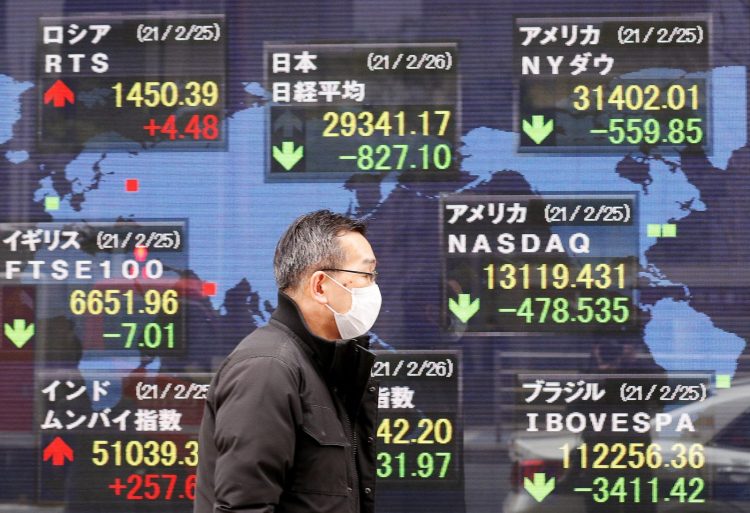Publisher: Maaal International Media Company
License: 465734
Asia Stocks Fall as Fed Expected to Stay Hawkish
Stocks in Asia were on the backfoot as traders awaited the Federal Reserve’s next policy decision, with interest rates expected to be higher for longer to curb inflation, Bloomberg reported.
An Asian equity gauge slipped for a third day, with all sectors trading in negative territory. Contracts for US stocks were flat in Asia Wednesday after the S&P 500 closed down though off session lows.
Stocks in Hong Kong and mainland China declined, with finance shares edging lower. Chinese lenders earlier kept the one- and five-year loan prime rates — the latter being a reference for mortgages — unchanged, following the central bank’s move last week to hold policy rates steady as officials assess the economic impact of existing stimulus.
اقرأ المزيد
“Event risk from FOMC and other central bank decisions due this week kept markets subdued in Asia, with lack of further stimulus announcements from China also acting as a headwind,” said Charu Chanana, a market strategist at Saxo Capital Markets.
Meanwhile, oil fell as wider markets held a cautious tone ahead of the Fed’s meeting. Still, with crude near a 10-month high, global central banks’ fight against inflation becomes more complicated.
Australian and New Zealand bond yields ticked higher, mirroring the moves in both the five- and 10-year Treasury yields which hit the highest levels since 2007 on Tuesday. Treasuries were little changed during Asian trading, as was the dollar.
The yen steadied after rebounding from its near 10-month low after US Treasury Secretary Janet Yellen said any intervention by Japan to support its currency would be understandable if it were aimed to smooth out volatility.
The offshore yuan was little changed after the People’s Bank of China reiterated its commitment to crack down on behaviors that disrupt the FX market.
Fed Chair Jerome Powell and his colleagues are widely expected to hold rates Wednesday. Still, supply shocks such as climbing oil prices present the central bank with a quandary as they simultaneously boost inflation and curb economic growth. Surging energy costs played a role in tipping the US into recession in the mid-1970s, as well as the early 1980s and 1990s.
Aside from expectations of a hawkish hold, investors will focus on the Fed’s updated quarterly rate projections — known as the dot plot — that will be released at the conclusion of the policy meeting. High on the watchlist will be whether these forecasts continue to reveal a median view for one more quarter-point hike this year and whether forecasts for 2024 scale back the 100 basis points of rate reductions that officials foresaw in June.
“Going into 2024 to really get inflation back to that 2% target, the Fed is at least going to have to hold for an extended period of time rather than cut,” Kathryn Rooney Vera, chief market strategist at StoneX, said on Bloomberg Television. “The dollar probably has a bit more upside.”









